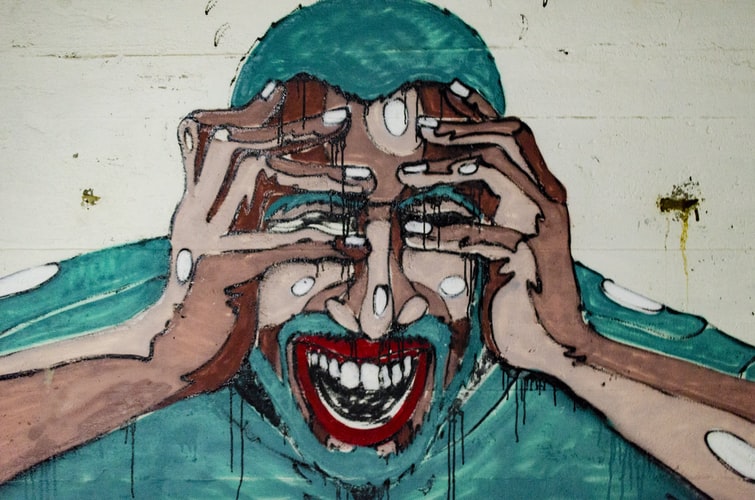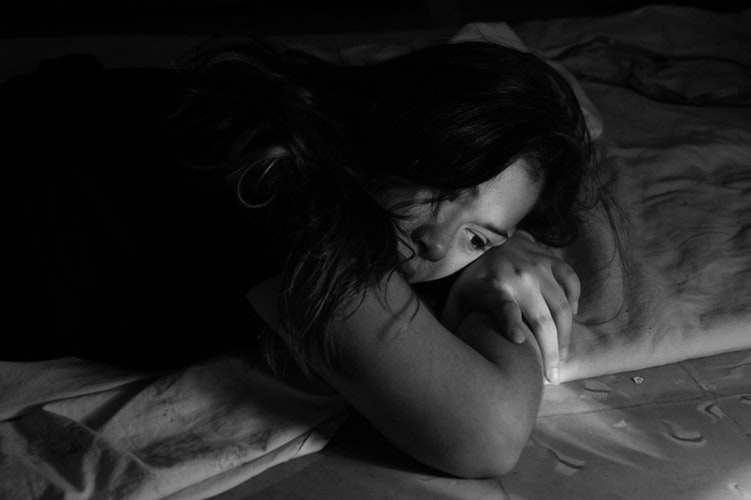What is anxiety?

Anxiety disorder is generally defined as having intense, excessive and persistent worry and fear about everyday situations. But it’s more than that. Anxiety is an arson that sets every stage you step into on fire. It is is a shredder that dismantles your thoughts into chunks making the words that comes out of your mouth not in conjunction with your brain. Anxiety installs electric wire around people.
The illness can feel like being stuck in a trash compactor or in a room where water is steadily streaming onto the floor until it’s up to your chest. Anxiety is spending your whole life housing a gremlin inside your head keeping you from doing things that you really want to do, sends your brain racing at the speed of light, makes you doubt yourself, forces you to isolate yourself, makes you cry over nothing and everything at the same time, make you pull yourself away from people you want so badly to fall into, distorts your thinking and drains you of all the joys and pleasures of life.
Symptoms
The Diagnostic and Statistical Manual of Mental Disorders, 5th Edition (DSM-5) outlines specific anxiety behavioral definition list to help professionals diagnose generalized anxiety disorder. Having a standard set of symptoms to reference when assessing clients helps them to more accurately diagnose mental health concerns and, in turn, fashion a more effective treatment.
When assessing for generalized anxiety disorders, clinical professionals are looking for the following:
- The presence of excessive anxiety and worry about a variety of topics, events, or activities. Worry occurs more often than not for at least 6 months and is clearly excessive, have no factual and logical basis.
- The worry is experienced as very challenging to control. The worry in both adults and children may easily shift from one topic to another.
- The anxiety and worry are accompanied with at least three of the following motor tension or cognitive symptoms (In children, only one symptom is necessary for a diagnosis of GAD):
– Edginess or restlessness
– Tiring easily; more fatigued than usual
– Impaired concentration or feeling as though the mind goes blank
– Irritability (which may or may not be observable to others)
– Increased muscle aches or soreness
– Difficulty sleeping (due to trouble falling asleep or staying asleep, restlessness at night, or unsatisfying sleep) - Reports autonomic hyperactivity such as palpitations, shortness of breath, dry mouth, trouble swallowing, nausea or diarrhea.
- Repeatedly experiences unexpected, sudden, debilitating panic symptoms (shallow breathing, sweating, heart racing or pounding, dizziness, trembling, chest tightness, fear of dying or losing control), resulting in persisting concern about having additional attacks.

Causes
Anxiety can be attributed to mental/physical condition, genetics, effects of drugs, personal history, stress or a concoction of these.
How to slay your anxiety disorder?
Cognitive Behavioral Therapy
Cognitive behavioral therapy (CBT) is a type of psychotherapy that focuses on addressing negative patterns and distortions in the way we perceive the world and ourselves. As the name suggests, this involves two main components:
- Cognitive therapy examines how negative thoughts, or cognitions, contribute to anxiety.
- Behavior therapy examines how you behave and react in situations that trigger anxiety.
The basic premise of CBT is that our thoughts—not external events—affect the way we feel. In other words, it’s not the situation you’re in that determines how you feel, but your perception of the situation. Basically, your psychological response to an event is actually more important that what happened to you. As the stoic philosopher Epicurus puts it, “it’s not the things that troubles us, but our judgments about things.”
Exposure therapy
Exposure therapy, as the name suggests, exposes you to the situations or objects you fear. The idea is that through repeated exposures, you’ll feel an increasing sense of control over the situation and your anxiety will diminish.
Emotional Freedom Technique (EFT Tapping)
EFT tapping therapy combines aspects of cognitive therapy, exposure therapy and physical touch. During an EFT session, you tap your fingertips on specific points of the body while focusing on a specific concern. These points on the body are called meridian points, which are considered hot spots of the body’s energy. While tapping, you recite short phrases directed to an emotional or physical symptom. The goal of EFT is to balance energy and reduce stress, thereby improving emotional health. When tested against the standards of the American Psychological Association’s Task Force on Empirically Validated Treatments, EFT is considered an evidence-based therapy for anxiety, depression, phobias and post-traumatic stress disorder (PTSD).
Exorcise your demons through exercising
Although we think of fitness as something we do to look good, it can also improve our mental health. In fact, a research published in The Primary Care Companion to the Journal of Clinical Psychology proved that lifestyle modifications such as exercise can help you sleep better, reduce stress, give you energy and improve your mood.
Focus on the areas of your life that you can control right now.
To better manage our anxiety, we should focus on the things we control, and accept the rest as it happens. Remember that there’s a fine line between insightful introspection and overthinking. We can’t change what already happened in the past, but we can choose what to do with the given circumstances.
Let’s focus on that.
Dealing with a depressed partner/spouse? Here’s how to help your loved one!

